In 2025, the world marks 100 years since the architectural style known as Art Deco rose to prominence. Known for its decorative elements and reinterpretation of classical styles, Art Deco became a symbol of modernity and ambition in the early 20th century. While cities like Miami and New York are famous for Art Deco, Johannesburg holds a large and under-recognised collection of these buildings, built during a post-mining boom. Today, that legacy is at risk. Decades of private capital flight, neglect, and municipal mismanagement have left many of these structures hollowed out or forgotten – a threat not just to their physical form, but to our connection with the city’s past.
"I think that Art Deco is the architecture of the poet." – Barbara Adair, In the Shadow of the Springs I Saw
Johannesburg is a hodgepodge of architectural styles, from brutalist monuments and modernist towers to Victorian and Edwardian Baroque. A mixture of influences that reflect the changing place of the city globally as well as its local aspirations.
Here, the books Johannesburg Style and Johannesburg Transition by architect and researcher Clive Chipkin are invaluable resources for those wanting to dive deeper into the mix of influences that have led to Joburg garnering its own unique sense of style and space.
One style of particular note is that of Art Deco, not least because 2025 marks the 100th anniversary of the International Exhibition of Modern Decorative and Industrial Arts in Paris. The event in 1925 brought together modernist architectural forms, one of which, in a retrospective in 1966, came to be known as Art Deco.
While exact figures are hard to pin down, Johannesburg is said to have one of the largest collections of Art Deco buildings in the world. Together with cultural historian and author Petra Mason, whose lifelong love affair with Art Deco led to her living in cities like Miami and New York, we wanted to explore the state of Art Deco buildings in Johannesburg – for their beauty, layered histories, and their potential for contemporary life.
Le style moderne
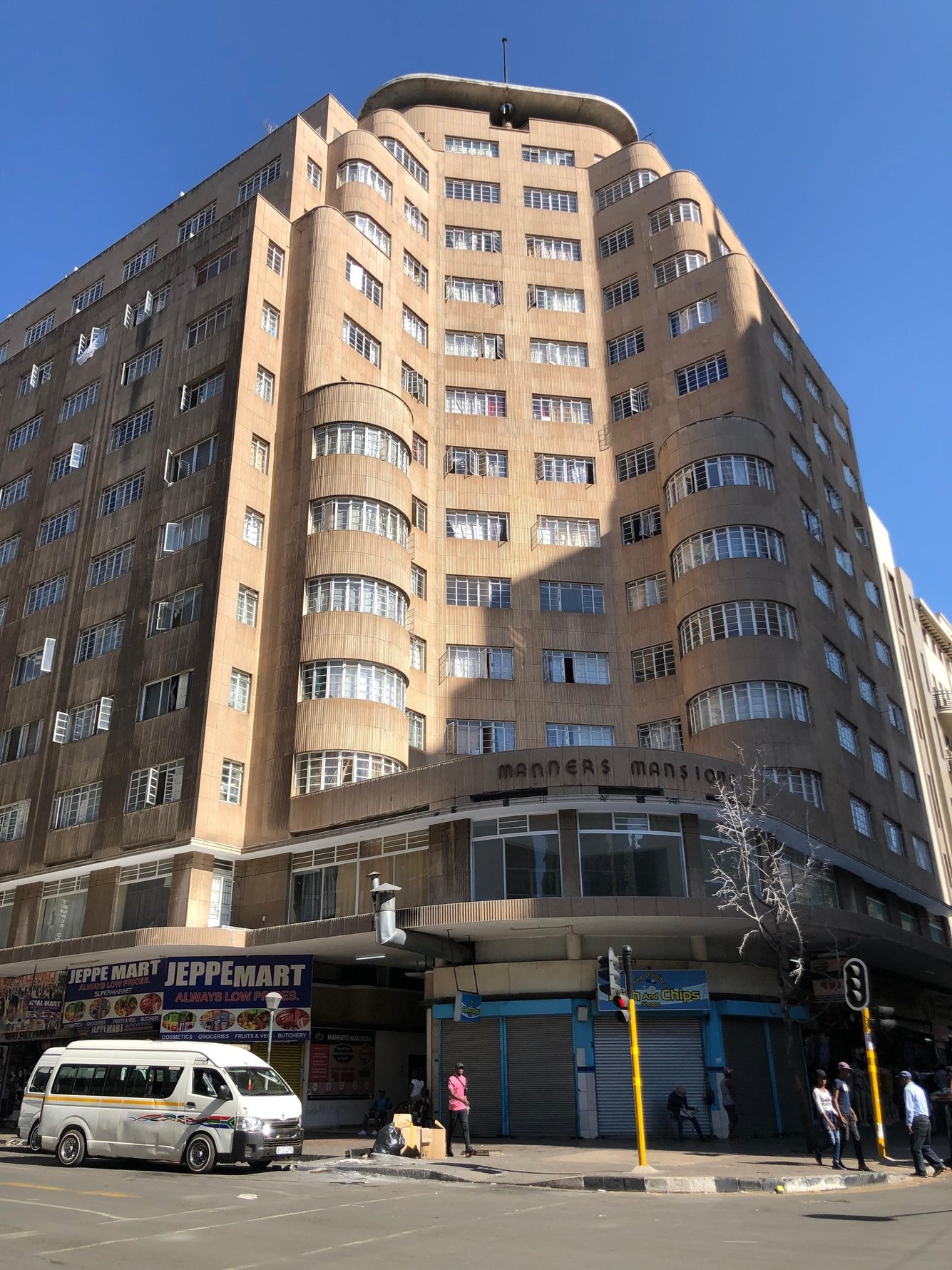
Photo: Brett McDougall.
As an architectural style, Art Deco was influenced by Cubism and the Arts and Crafts Movement, as well as the Beaux-Arts movement that preceded it. The movement was infused with the spirit of modernity and, in rejecting the immediate past, it favoured the reimagination of symbols and elements from ancient cultures such as the Egyptians, Greeks, and Mayans. It took these decorative elements and merged them with a new modern form, mixing geometric and organic shapes.
Art Deco is a departure from the past, but it does so by bringing classical, organic, and modern forms together. It is decorative, featuring leaves, flowers, and symbols that intertwine, but still practical with its spacious forms and attention to how users of the space might feel inside it.
At the Paris exhibition in 1925, it formed one of two dominant schools and faced critique from the likes of Melnikov and LeCorbusier as still being emblematic of the past and mere 'decoration'. And in some ways this was the case; there is a certain frivolity to the style of Art Deco.
“Art Deco is the birth of a flower; it was a movement of ideas, an architecture of buds; curls, swirls, and newborn petals.” – Barbara Adair, In the Shadow of the Springs I Saw
But where we differ from the critiques of these modernist architects is in the idea that Art Deco is 'mere decoration'. As writer Saidiya Hartman says, "Beauty is not a luxury, rather it is a way of creating possibility in the space of enclosure, a radical act of subsistence, an embrace of our terribleness, a transfiguration of the given. It is a will to adorn, a proclivity for the baroque, and the love of too much." This is what Art Deco does. It creates possibilities for a fuller life – one where beauty is not superfluous, but invites us to give more.
Art Deco comes to Johannesburg
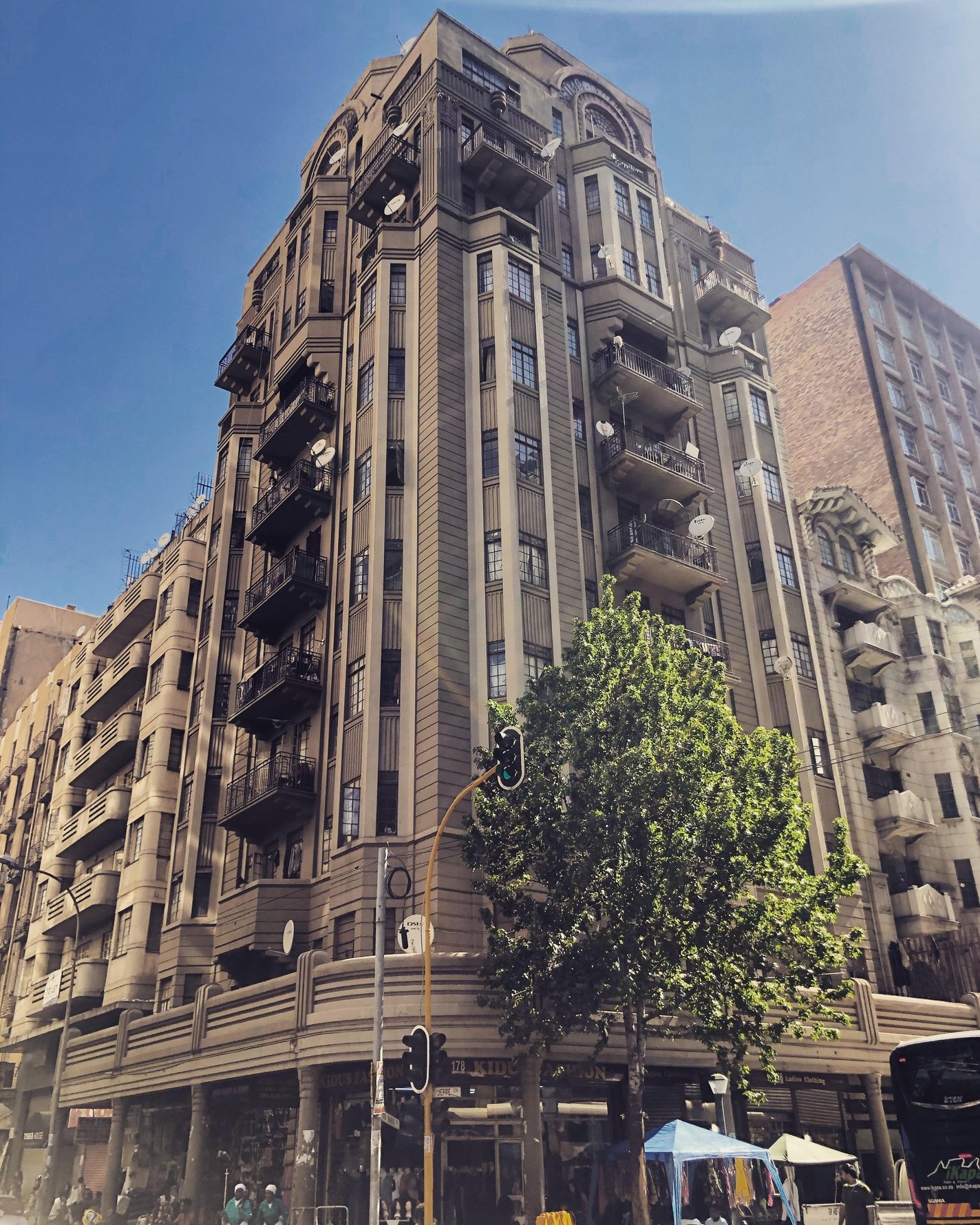
After the mining boom in Johannesburg, the economy was erupting, and with it, new buildings were being erected with confidence and zeal – proclaiming Johannesburg as a 'modern city'. Art Deco was one of the styles that captured the imagination of the city.
Kathy Munro, chairperson of the Heritage Association of South Africa and vice chair of the Johannesburg Heritage Foundation, says of this period, "What is unique and remarkable for Joburg is that in a short period of time – a mere six to 10 years – the city was rebuilt and reborn, abandoning Edwardian styles. It is equally remarkable that so many of these buildings still remain."
A key figure in the introduction of Art Deco to Johannesburg was the American tycoon I.W. Schlesinger, who pushed for an alternative to the dominant Edwardian architecture in the city. With these new forms, Chipkin says, "All the unwritten assumptions – the parochialism and elitism, the reticence – of Anglo-South Africa came to be challenged by the brashness and drive of American populism. And Schlesinger was its local emissary."
If Schlesinger was the emissary, then Art Deco was the message, and curlicued balustrades, geographic motifs, and extravagant facades became prevalent in the new buildings emerging in the city between 1930 and 1940. In the City Centre, buildings such as Ansteys, Manners Mansions, the Chrysler Building, and Normandie Court are some of the most emblematic from this period.
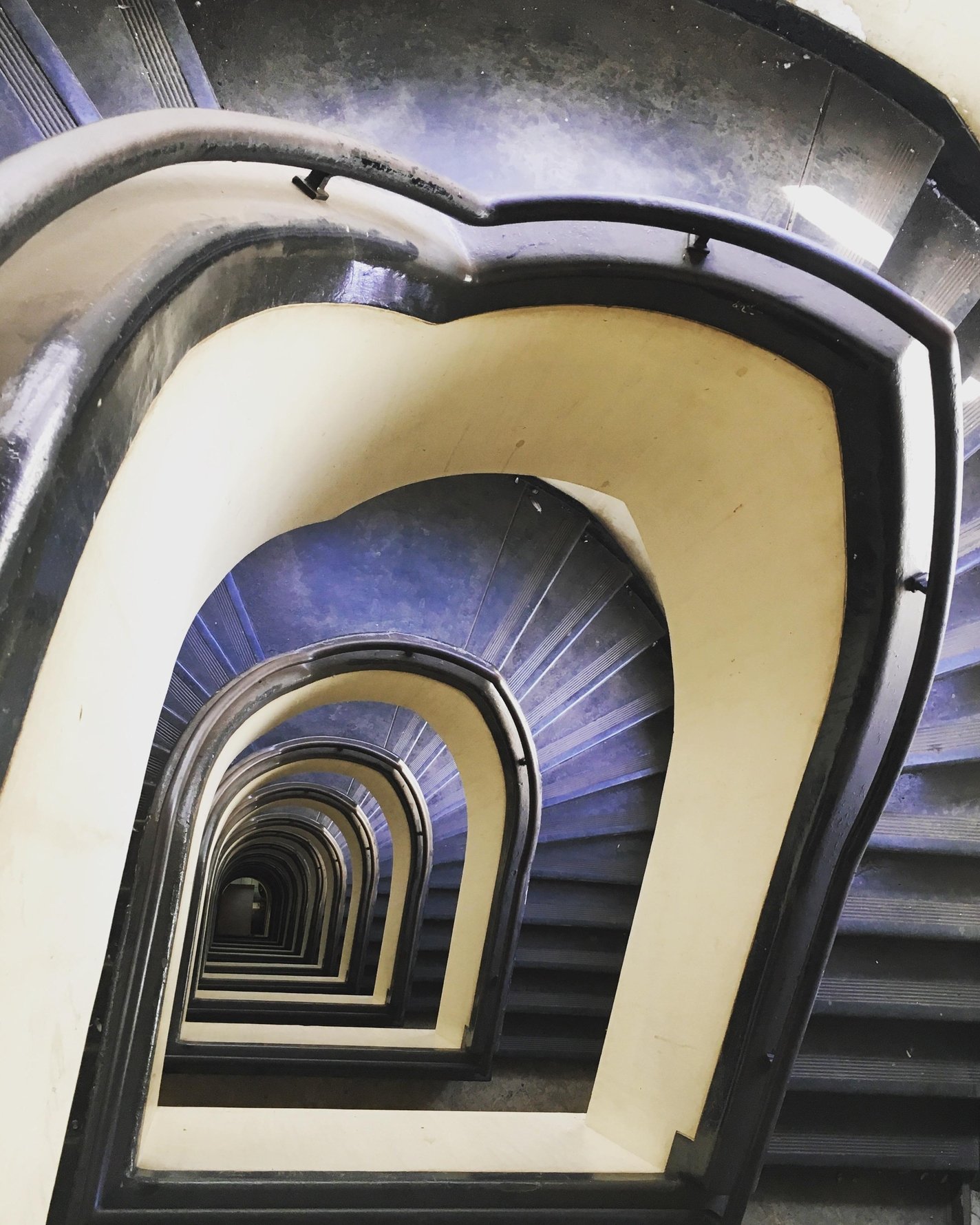
It was a city redefining itself as more than just the gold that ran beneath its surface. A city which, in its appropriations and intimations, was forming its own style, and one where the beauty of Art Deco sated and spurred the constant want for more underpinning Johannesburg.
This boom was not limited to the City Centre and, in terms of the Art Deco movement, Springs became something of a haven. As with many of Joburg's mining suburbs, Springs has always been a town of migrants, and after gold was discovered on the adjacent farm of Geduld, Springs boomed. Many of the early buildings and shops were influenced by and indicative of the Art Deco movement, and Springs easily brushes shoulders with Miami, an Art Deco tourist hot spot.
Pretty old buildings
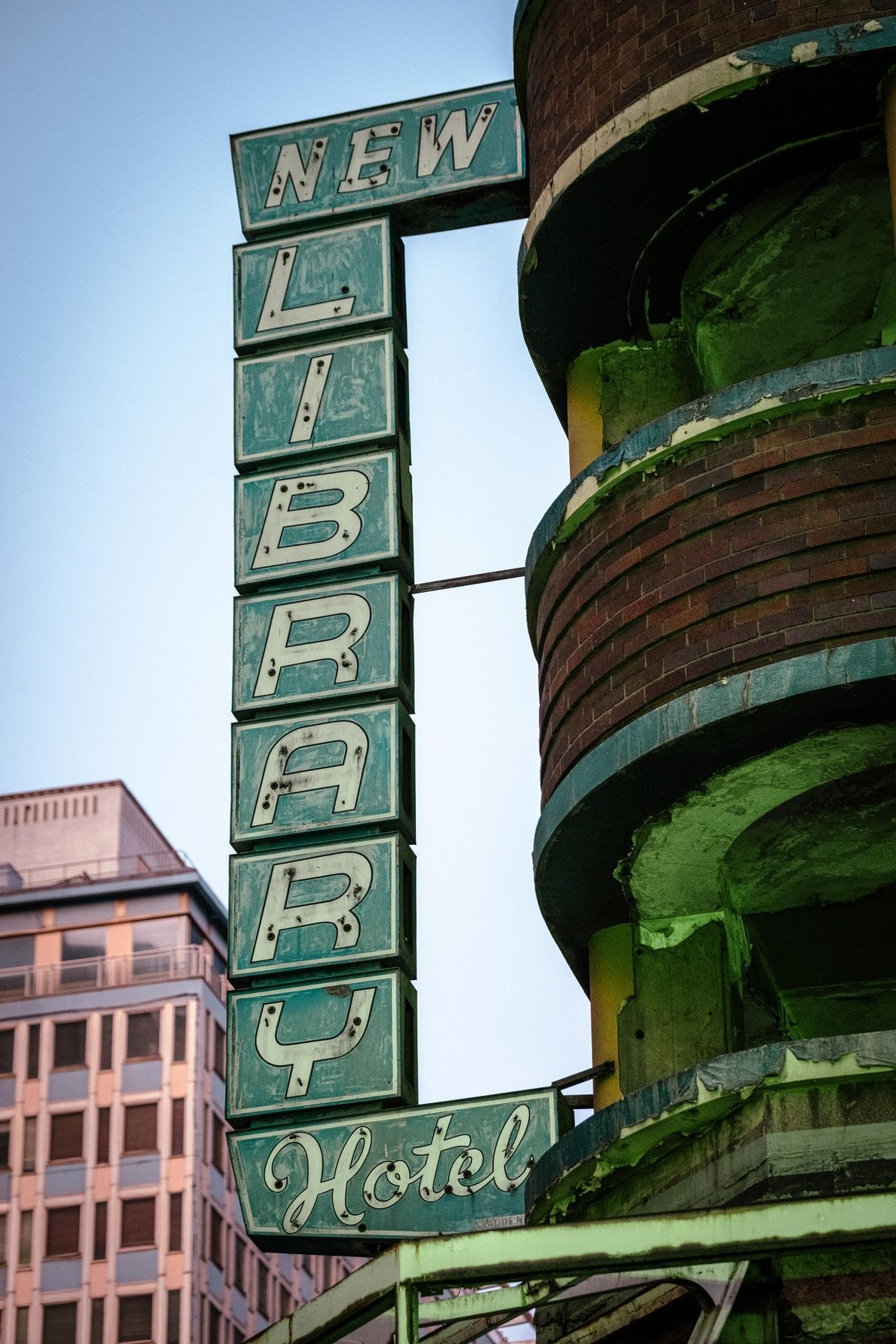
When speaking with Petra Mason, David Andrew, associate professor at the Wits School of Arts, said, "There is something about moving through the generous spaces – the high ceilings in the apartments and corridors, the original entrance hall – that I never tire of. Yes, the building has changed over the decades, but these body-space relationships continue to enthral me."
These old buildings do have an enthralling beauty. Be it the shimmer of gold in the ornate entrance of Ansteys, bronze monkeys clinging to the patterned stair railings, or the way the sunset catches the parabolic curves of Manner Mansions, it is hard to imagine these buildings vanishing from the city.
Yet, slowly this is what has been happening. With the capital flight that took place after apartheid, many of the buildings in Joburg's inner city have fallen into disrepair, with absent landlords and little investment. Too often, their preservation is dismissed as an elite concern, despite the fact that these spaces were shaped by and for the city’s diverse communities. In Springs, the issues are similar, and residents in the area have to bear the brunt of failing infrastructure as a result of private investors and the city directing their attention elsewhere.
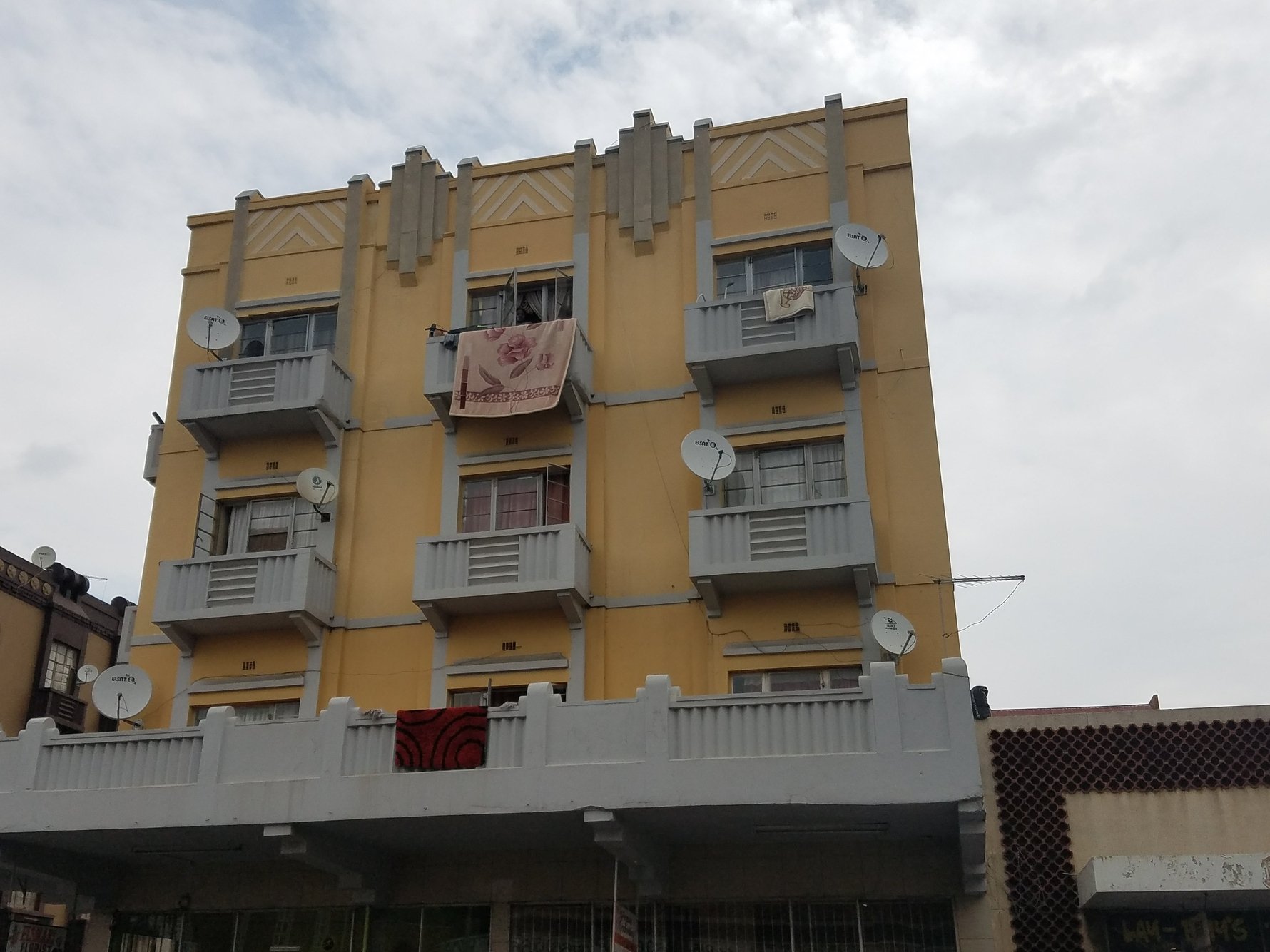
Many buildings are abandoned, empty shells that house the city's ghosts, or they have been 'hijacked' and are used as housing, though often this means squeezing as much out of what is there rather than truly restoring the building. Parallel to this is a dire housing crisis in Johannesburg, where working-class residents have to contend with long travel times, overcrowding, and strained basic services.
In 2014, this tension between decay and potential was brought into relief by the guerrilla campaign Beware of Colour, where a group of artists splashed the facades of these empty buildings in pink paint. This provocation drew media attention and sparked a public debate. Aside from highlighting the loss of these heritage buildings, the project specifically targeted buildings that could be used for affordable housing, linking the preservation of the past to the aspirations and needs of the present. However, this controversial campaign did not spur any visible improvements, with some heritage lovers branding it as vandalism. While it may not have led to tangible change, the issue that the action raised – the housing crisis and homelessness in the city – continues to be pertinent.
Old and new life
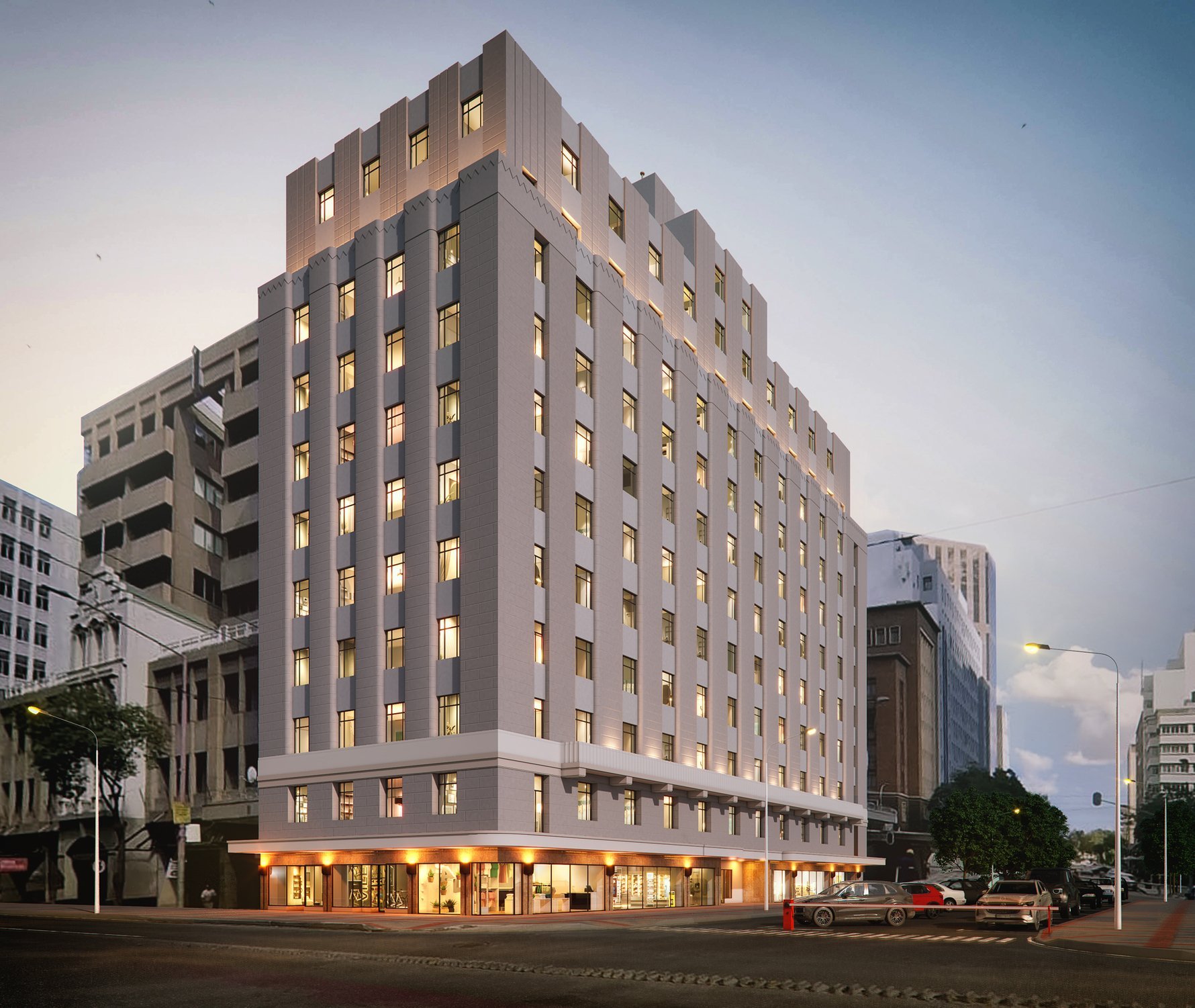
The preservation of these Art Deco gems is more than saving some neglected, attractive old buildings and the history they hold. Their abandonment reveals a broader lack of care for the people and world around us, and the many lives and stories that have passed through these buildings. It is at once about preserving these past stories, while also offering the opportunity to constructively repurpose and redefine them to create a city that welcomes and supports all its residents.
As the recent renovation of the Aegis Building (2025) opposite the Rand Club shows, in repurposing and reinvigorating these buildings, one does not need to freeze or return to history. Rather, space for new histories – ones which intertwine with and disrupt the past – can be made. Instead of seeing these buildings as problems or lamenting their decay, we need to see the potential that lies within them.
Barabara Adair, whose book In the Shadow of the Springs I Saw explores the Art Deco architecture of Springs, says of her flat in Daventry Court, "I must remember its history and the stories that its walls hold." Stories of Johannesburg's past, of the people who have lived in and made these cities, are embedded in these buildings, and it is these that we risk losing more than buildings themselves. These spaces connect us to each other, and act as landmarks for the multifaceted layers of the city.
Their beauty can spark passion and joy, something Miami has used to enhance itself as a popular tourist attraction. So too, Johannesburg should be known for its significant place within this architectural movement. Tourism, if structured beneficially for the city's residents, can bring income streams into neighbourhoods that have otherwise been forgotten in official considerations. Repurposing these heritage buildings to attract tourists offers the opportunity to bring new life into the city.
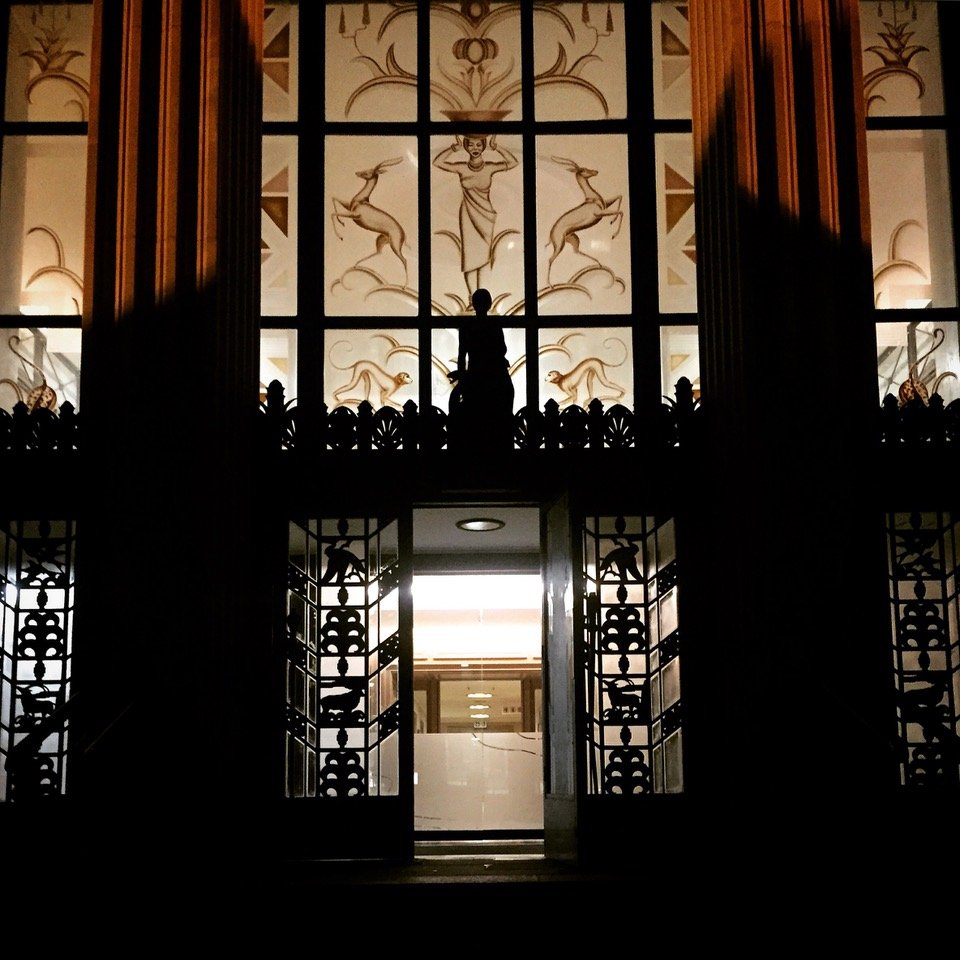
Most importantly, the neglect of these buildings and the ways people have found to still make use of them, tells a bigger story. One of a state built for a select few, which now struggles to serve the majority. One of people struggling to make ends meet and to survive, yet also still finding ways to live. They are emblematic of the contradictions of Johannesburg, a colonial city turned African metropolis – both this and that and everything in between.
And while they are beautiful, they can also be practical. The shells are there, and now they just need to be filled, be it as affordable housing in the case of the Aegis Building, arts centres, creative hubs, or community centres. It is time we started looking at these buildings with the same creativity they celebrate.
Adair writes, "The Art Deco buildings are the stories of people, it is their poetry; words of luxury and desire and prosthetic limbs that run and dance; tales of ballerina buildings that do not teach of morality but celebrate and make legends of the children who live inside them." Ultimately, this is what these buildings are: spaces for the poetry of life. Spaces that can be so much more. Spaces we must celebrate if we’re to keep alive the spirit that makes Johannesburg so unique. A hundred years after Art Deco dazzled the world in Paris, Johannesburg’s own legacy still flickers – not in nostalgia, but in the possibility of renewal.
The Johannesburg Heritage Foundation offers Art Deco tours. Keep an eye on their website for the next one.


_m.jpg)
_m.jpg)
_m.jpg)


Comments